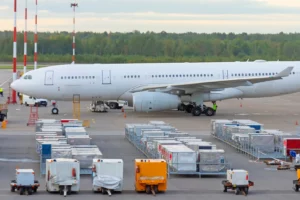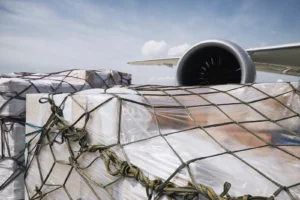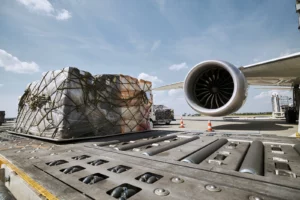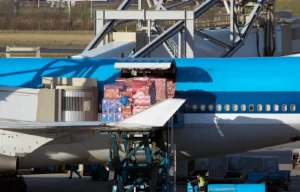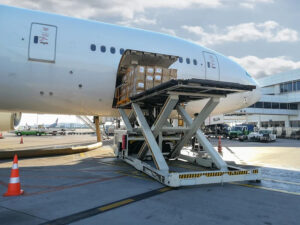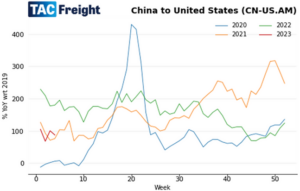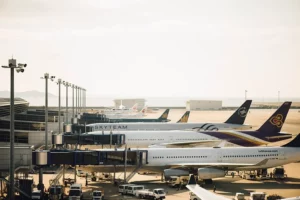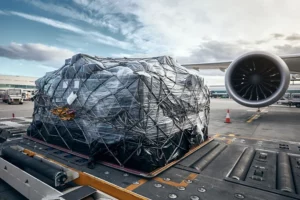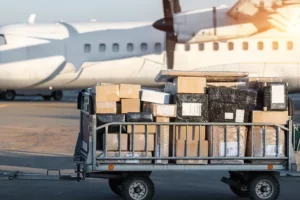During the recent IATA World Cargo Symposium, held in London in late September, you could almost feel a palpable sense of pride in the industry. After all, despite falls this year in air freight price levels as measured by Price Reporting Agency (PRA) TAC Index, the sector had undoubtedly proved its importance to the whole world during the years of the Covid pandemic. Without the ability to fly vast quantities of personal protective equipment (PPE) and key pharmaceuticals, the amazingly rapid global vaccine rollout in response to Covid would simply not have been possible. Yet the very importance of the air freight sector still comes across as something of a surprise even within the aviation industry itself. Ross Baker, chief commercial officer at London Heathrow, caused some gasps in the audience at IATA when he noted, for instance, how an incredible one-third of all UK cargo – by value – had gone through Heathrow in 2019, weighing in at a cool £140 billion that year. The cargo side of aviation – by common consent – had in previous times always been something of an after-thought as compared with the bigger, more glamorous, and more profitable air passenger traffic business. Covid, of course, put a virtual halt to passenger traffic – and at a stroke simultaneously elevated the importance of freight. Air cargo had not been seen in the past as such a priority at Heathrow, Baker admitted. Post-Covid, that was now emphatically no longer the case. Nevertheless, the air cargo sector still faces some powerful and severe challenges and headwinds – including not least due to continuing perceptions and concerns about its environmental footprint, and negative image as a sector in which to forge a career. Brendan Sullivan, global head of cargo at IATA, trumpeted the progress the industry was making towards a goal of net zero carbon emissions by 2050 – and the key role to be played by sustainable air fuel (SAF) in achieving that. But other participants at the conference were more sceptical, with some noting there had been plenty of talk about SAF and cutting carbon for a number of years – and not much progress yet. Jonathan Wood, VP in renewable aviation at Neste, noted how SAF was still generally much more expensive than jet fuel even at a time when oil prices were high and the ‘crack spread’ – the relative price of jet fuel to crude oil – was elevated, as noted by IATA chief economist Marie Owens-Thomsen. Martin Drew, senior VP for cargo at Etihad, also noted a continuing lack of alignment and consistency of regulatory treatment for SAF around the world – with an outlier like the state of California offering subsidies, but in other places SAF being up to eight times the price of jet fuel. There are various initiatives by air freight carriers now in progress towards cutting carbon emissions and steadily using more SAF. But the patchy progress overall so far is no doubt one of various factors that makes air cargo be seen as an undesirable sector in which to work. Indeed, there was a sobering presentation at the Symposium from Arpad Szakal, a principal consultant on recruitment at Cormis Partners, on the challenges to recruiting and retaining talent in the sector. After many airlines had cut both the number of staff and working conditions aggressively during the pandemic, the whole aviation sector now faced a problem in human resources, Szakal noted. This could be seen all too readily on the passenger traffic side – with a lack of sufficient check-in and baggage handling staff feeding through to large numbers of flight cancellations. On the cargo side, there were also perceptions in the workforce of an industry of mostly low skilled work – with jobs packing and shifting boxes – making it hard to attract talented people, and especially females, Szakal noted. Research showed that some two-thirds of companies operating in air cargo were now under-staffed, with a shocking staff turnover in the first year of 40%-plus in many companies, he claimed. Moreover, pay and prospects were not seen to be good or competitive with other sectors at all levels up the corporate scale – not just at entry level, Szakal added. Of course, there are ways to remedy these perceptions – with pro-active approaches on incentives, retention, diversity and inclusion, ‘reskilling’ and ‘upskilling.’ But the central point surely is to emphasise the ongoing importance of the sector – which is surely going nowhere soon given its key role in the global economy, especially if progress on carbon and SAF can be accelerated. With this in mind, it is interesting to note that after trending down in recent months, air freight prices have firmed up recently – with the overall Baltic Air Freight Index (BAI00) up +4.9% in the week to 24 October as the long-awaited ‘peak season’ ahead of the US Thanksgiving holiday finally approached. Though still down -28.5% year-on-year amid a murky macroeconomic outlook, air freight prices overall remain well above pre-pandemic levels. The ongoing importance of the industry to the global economy simply cannot be denied.
